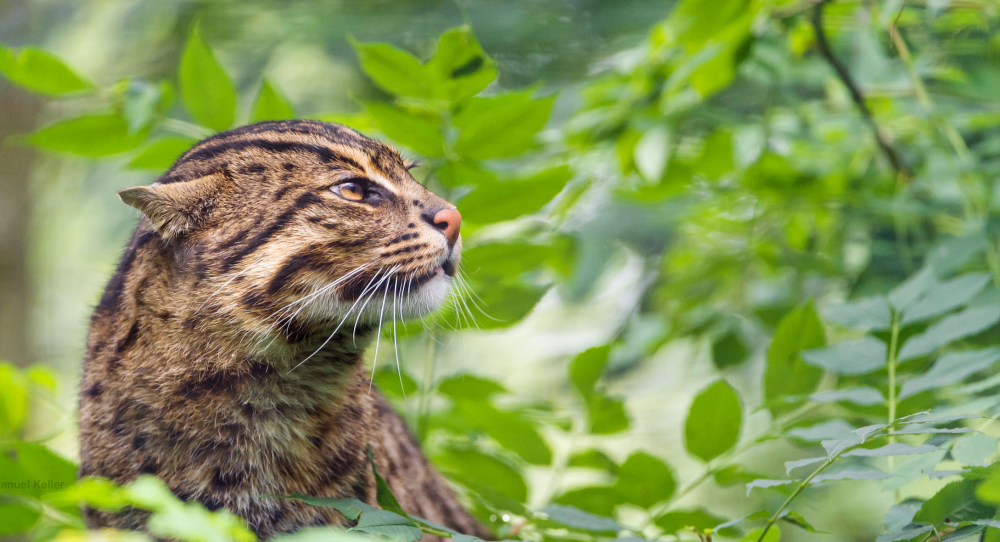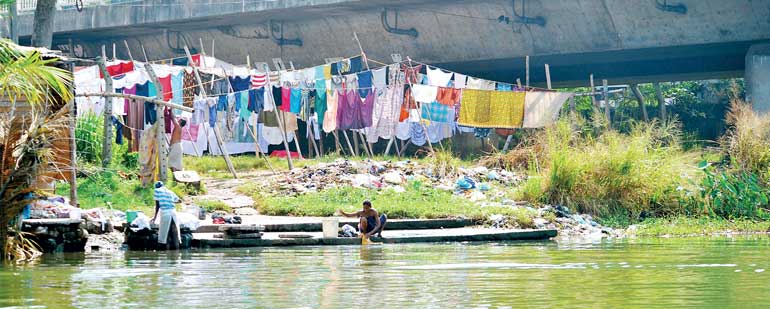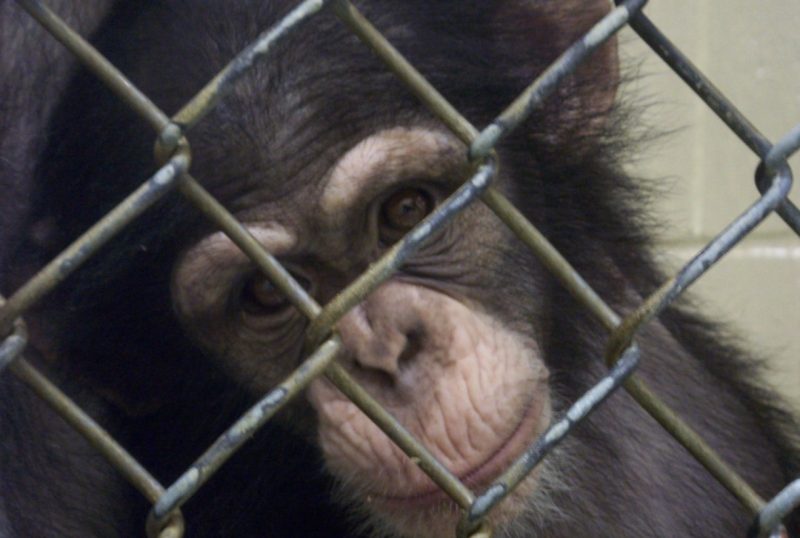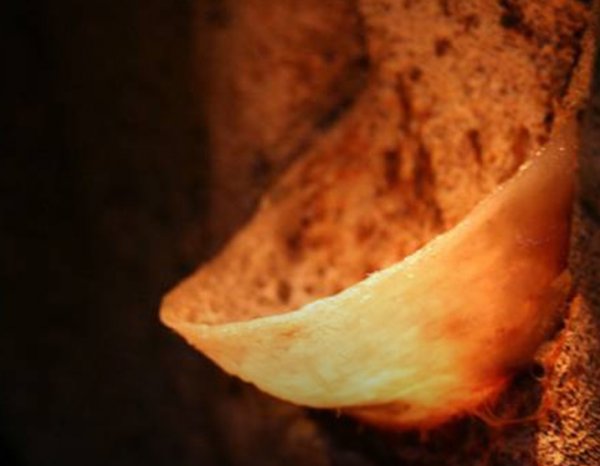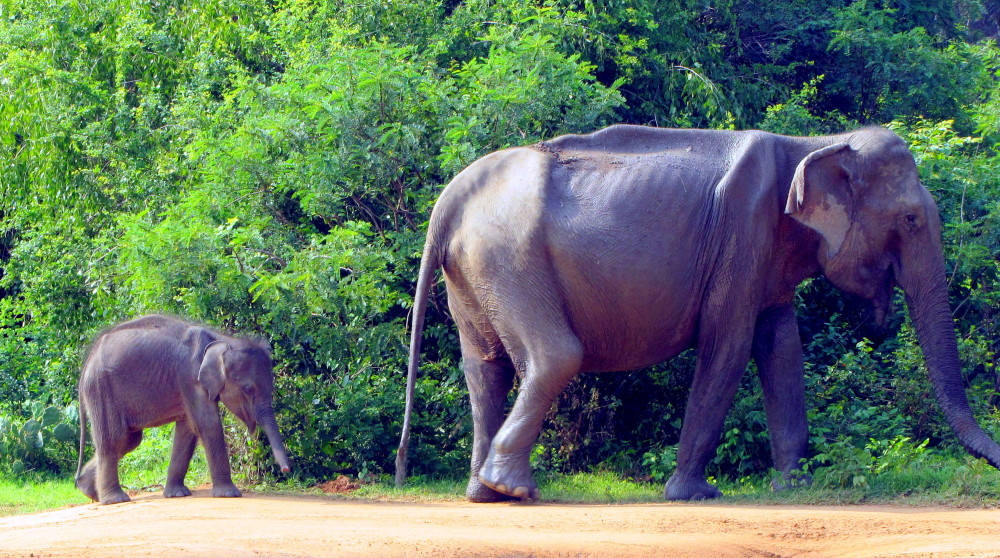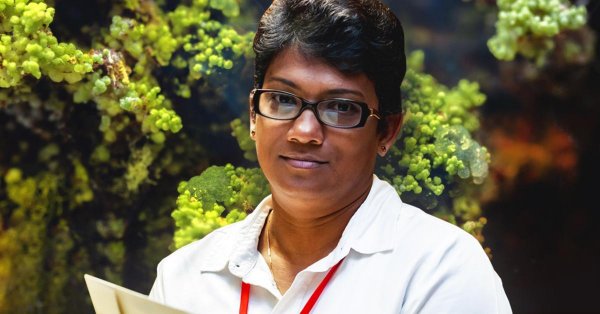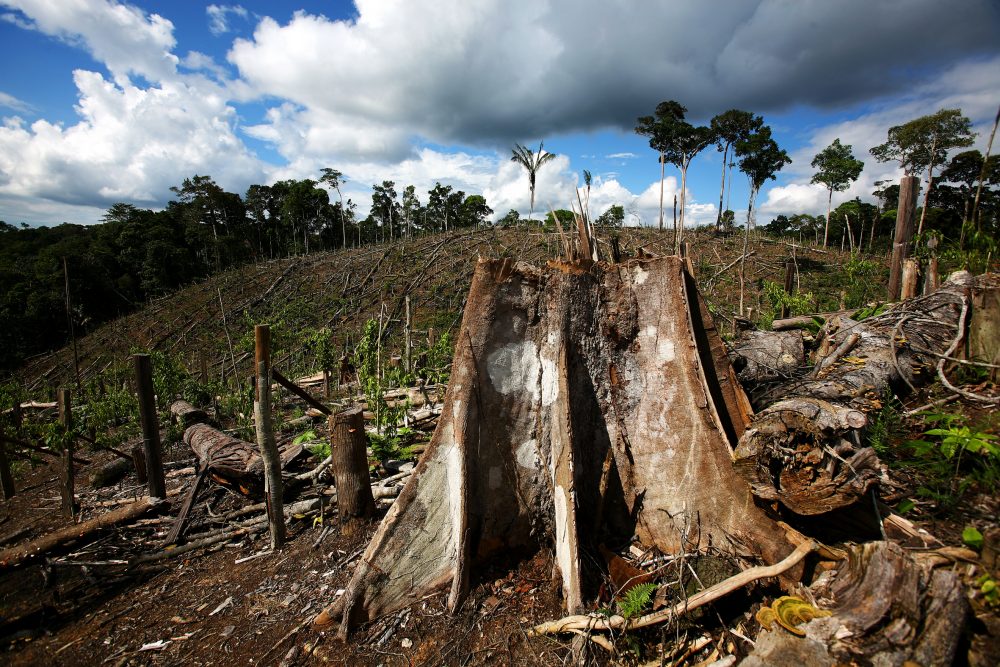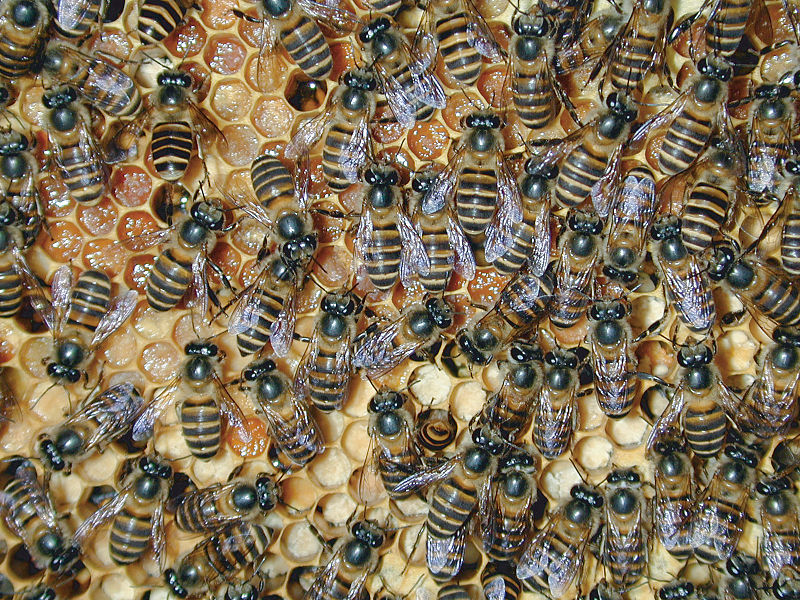
Bees may be small creatures, but the role that they play in the environment is a very important one. The tiny hairs found on the bodies of these insects allow them to carry pollen from one flowering plant to another, and this process—called pollination—is how seed-bearing fruits, vegetables, grains and other crops grow.
Sri Lanka is home to nearly 150 species of bees—and four of these species of bee produce their own honey.
According to Beekeeping for Honey Production in Sri Lanka by Dr. R.W.K. Punchihewa, all species of the honey bees found in Sri Lanka belong to the family Apidae. The names of these species are the Asian hive honey bee (Apis cerana), the giant honey bee (Apis dorsata), the dwarf honey bee (Apis florea) and a species of stingless honeybee called dammar bees (Trigona iridipennis).
The South Asian Honey Bee

The Asian honey bees are the most common species of honey bee in Sri Lanka. Image courtesy Panthers Eco Tours And Treks.
If you come across a covered bee’s nest that is suspended in a dark space—like a hollow tree trunk or a rock cavity—its most likely to be a colony of Asian honey bees. They can be found quite commonly throughout the urban and rural landscapes of Sri Lanka.
This type of bee bears many similarities in appearance with its distant cousin Apis mellifera—the European honeybee. However, according to Dr. Punchihewa these little creatures have shown behaviour that is different from its European cousin. Its rather mild nature is why it is quite popular among beekeepers in Sri Lanka.
While all honeybees have a good sense of direction because of gravity-sensitive organs in their bodies, Asian honey bees have a more advanced sense of direction than their local counterparts.
“[Asian honey bees] who are considered to be at a more advanced stage of evolution have the ability to memorize the position of the sun and then to transpose the direction of the sun inside its dark nest by using the direction of gravity.” [1]
There is one particular subspecies of Asian honey bee native to the Indian Subcontinent and Sri Lanka: the South Asian honey bee (Apis cerana indica). Dr. Punchihewa notes that the South Asian honey bee has lived in Sri Lanka and the Indian subcontinent for a million years or so, and has constantly been evolving as a subspecies.
The Dwarf Honey Bee
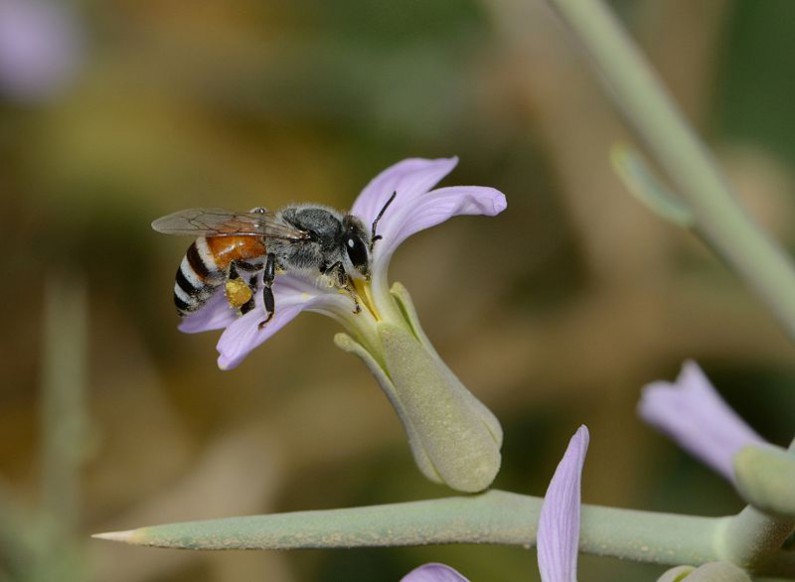
The dwarf honey bees are thus named due to their small size. Image courtesy en.wikipedia.org
Known as danduwel in Sinhalese, Dr. Punchihewa notes that these little bees are called dwarf honey bees because of their small size when compared with the other species of honey bee. They are reddish brown in colour, and prefer to build their nests in open areas.
The nests are constructed with one single layer of honeycomb and are completely exposed. They can be usually found suspended from tree branches. Predatory red ants are a problem the dwarf honey bees face by building open nests. As a solution to this, the dwarf honey bees apply a sticky coat of resin on the tree branch from which their nest hangs.
The Giant Honey Bee

The giant honey bees—also known as giant feral honey bees—are vicious, but they only attack if there is a danger to their nests. Image courtesy wikimedia.org
Giant honey bees are better known by their Sinhala name which is bambara. The bambaru—especially those atop Sigiriya—have an unfortunate reputation for being vicious. But their defensiveness owes to the fact that they—like the dwarf honey bees—build fragile, exposed nests in open areas. So it is best to be cautious in any area where giant honey bees have made nests.
The Dammar Bee
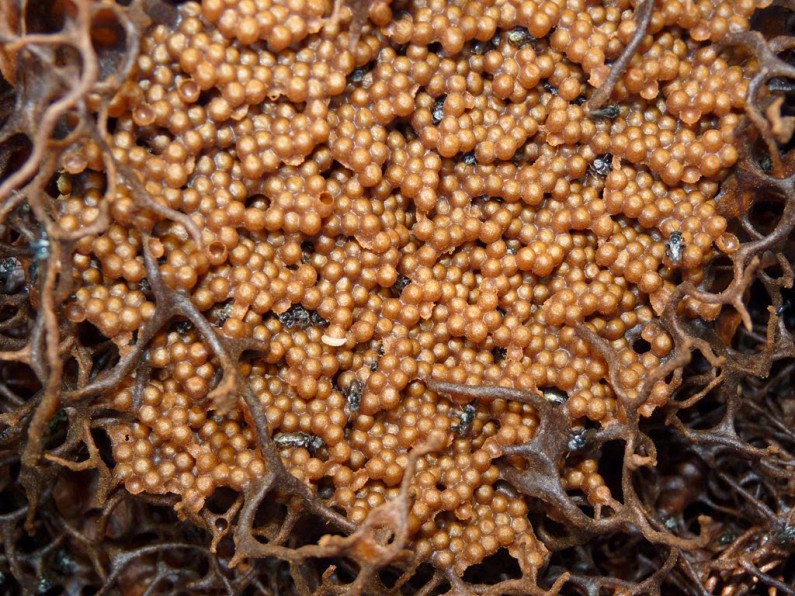
Inside the nest of a colony of dammar bees. Image courtesy bradpetehoops.blogspot.com
This is the only variety of stingless bee in Sri Lanka. While the other species of honey bees in the island use their sting to defend their nests, the dammar bees defend their colonies by biting intruders.
Another factor which makes this bee different from the other honey bee species in Sri Lanka is the way its nest is constructed. While the other honey bees create nests which are always suspended from above and made out of beeswax, the dammar bees make their nests at the bottom of a nest site—or protected cavity—with a mixture of plant resin and beeswax.
The Ecological Importance Of Bees
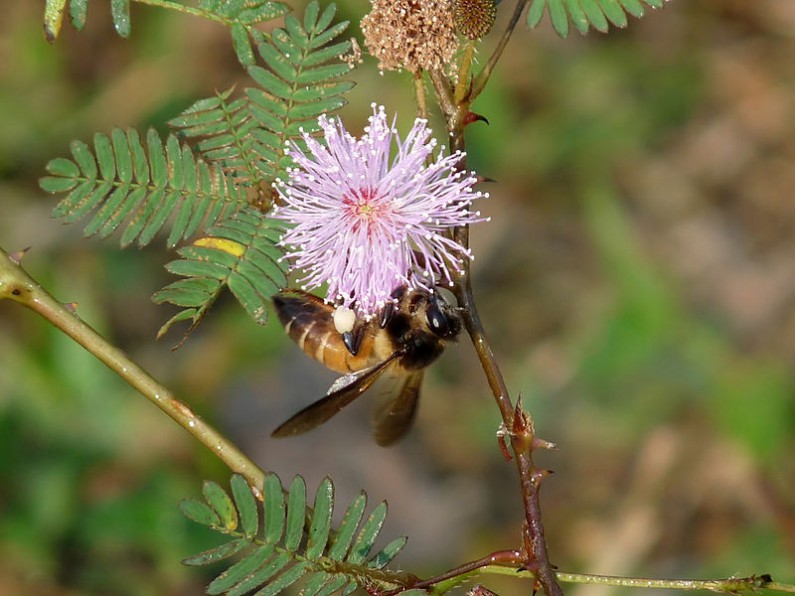
Honey bees may be small in size, but the role they play in maintaining the ecological balance in the environment is not. Image courtesy en.wikipedia.org
Speaking to Roar Media, environmental lawyer Jagath Gunawardena highlighted the importance of bees as pollinators. He asserted that even though many small animals like birds, bats, and insects such as wasps and butterflies are responsible for pollination, it is the bees who are the most important pollinators, specifically honey bees.
“In Sri Lanka, many cultivated crops such as vegetables and coconut need bees for the process of pollination to take place. At one time, coconut cultivators used to rear bees on the estates in order to get a better yield of coconuts,” said Gunawardena..
Gunawardena went on to say that a decline in the bee population could result in food shortages. This may be one reason why it is difficult to find certain varieties of fruits in urban areas as the numbers of bees in these areas have dwindled over the past few years.
“There are four main factors which have caused a reducing bee population. Deforestation, which has resulted in less trees in certain areas, the use of harmful pesticides and agro-chemicals, fumigation and environmental pollution,” he said.
Protecting Our Honeybees: What We Need To Do

An exposed nest of a giant honey bee colony. Image courtesy en.wikipedia.org
Gunawardena also mentioned that the chemicals used to destroy mosquitoes and pests which target crops are so potent that they even kill harmless creatures such as bees. Which is why people—and the government—need to use chemicals which have a less destructive effect on the environment in order to conserve the bee population within Sri Lanka.
With regard to the importance of honeybees, the primary measure for their conservation is the Pollinator Conservation Action Plan (PCAP) which was put forward by the Ministry of the Environment in 2012. However, the conservation policy is not specific to bees and takes into consideration all creatures which are categorized as pollinators.
As Gunawardena noted, all people—not just environmentalists and others involved in the natural sciences—need to take measures to reduce environmental pollution.
He suggested that growing more trees and plants with nectar and reducing the use of harmful chemicals are a few ways in which people can conserve—and encourage more—honey bee colonies, especially in urban localities.
“Sometimes people come across honey bee nests inside houses—this may be a measure taken by the bees because of a lack of trees and other natural spaces for them to make their nests,” Gunawardena said.
As more and more trees are cut down and cleared away for construction in the urban areas, it is possible that colonies of honey bees find it difficult to make nests in these areas.
If we are to maintain the biodiversity of our country—and make sure that there are enough agricultural crops for the future generations of Lankans—it is up to all of us protect these helpful little creatures and their nests.
[1] Beekeeping for Honey Production in Sri Lanka by R.W.K. Punchihewa (1994) Published by the Department of Agriculture. p. 23
